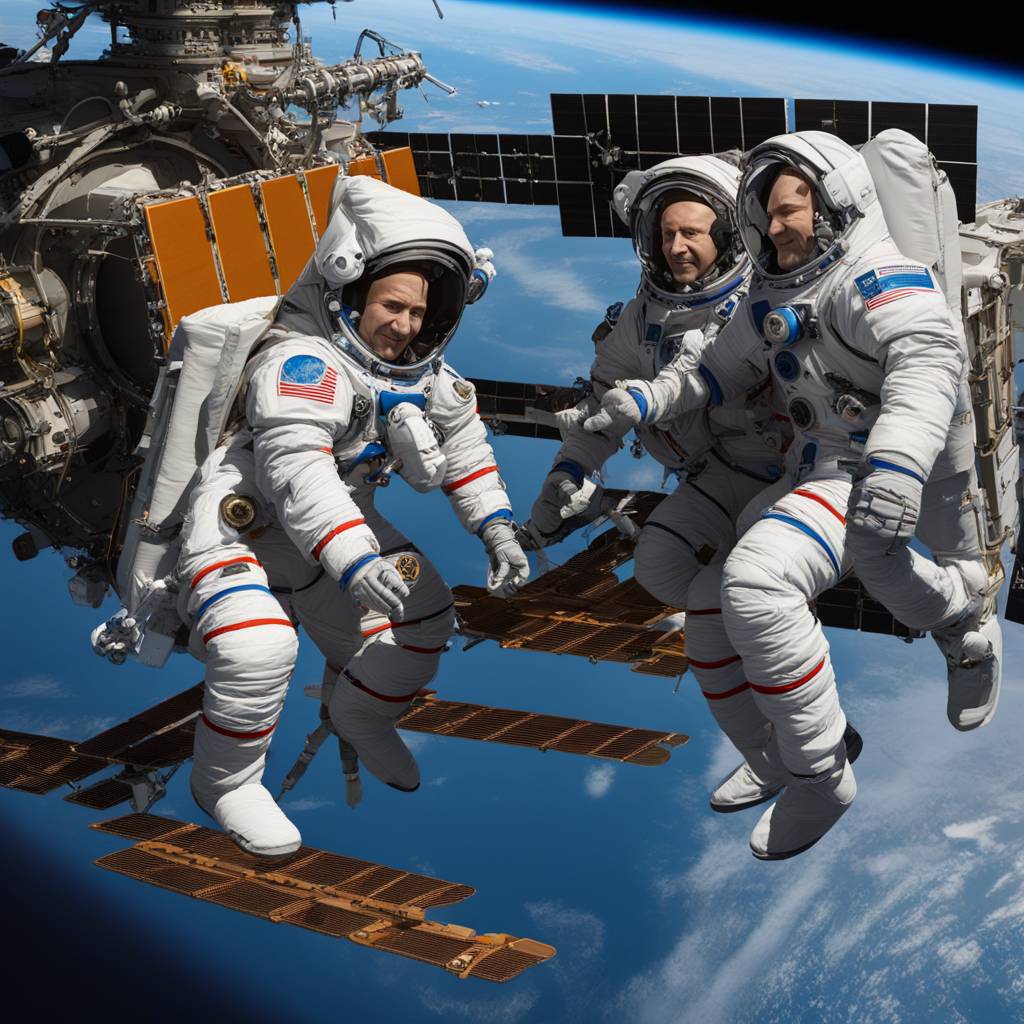A Russian spacecraft carrying three astronauts, including NASA’s Tracy Dyson, successfully docked at the International Space Station after a successful blastoff from Kazakhstan. The initial launch attempt was aborted due to a voltage drop in a power source triggering an automatic safety system. The crew, consisting of American and Russian astronauts, joined the station’s current crew and will remain there for varying lengths of time before returning to Earth. The space station, a symbol of international cooperation, now serves as one of the last remaining areas of collaboration between Russia and the West amid tensions over Moscow’s military action in Ukraine.
The successful docking of the Soyuz MS-25 spacecraft marks another milestone in space exploration and cooperation between different countries. The astronauts on board will conduct various experiments and research during their time on the space station before returning to Earth. The collaboration between NASA, Roscosmos, and other space agencies highlights the importance of working together despite geopolitical tensions on Earth. The space station’s operation is currently planned to continue until 2030, showcasing the long-term commitment to international cooperation in space exploration.
Tracy Dyson, Oleg Novitsky, and Marina Vasilevskaya are three of the astronauts who have successfully reached the International Space Station, with Dyson on her third trip to the orbiting complex. They will be joining the station’s current crew and working together to conduct various experiments and research projects during their stay. The mission also serves as an opportunity for Vasilevskaya to make her first space mission as Belarus’ first astronaut, highlighting the importance of representation and diversity in space exploration.
The astronauts will spend varying lengths of time on the space station, with Dyson set to spend six months before returning to Earth in September. Novitsky, making his fourth flight to the orbiting outpost, will also spend a significant amount of time on the station, while Vasilevskaya will spend 12 days before returning to Earth. The diverse crew of American, Russian, and Belarusian astronauts showcases the global nature of space exploration and the importance of collaboration between different countries in furthering scientific knowledge and understanding.
The successful docking of the Russian spacecraft at the International Space Station comes at a time of heightened tensions between Russia and the West over Moscow’s military action in Ukraine. Despite these tensions, the space station continues to serve as a symbol of international cooperation and collaboration in the realm of space exploration. The crew on board the space station will continue to work together to conduct experiments, research, and other activities that will contribute to our understanding of space and the universe.
Overall, the successful docking of the Soyuz MS-25 spacecraft at the International Space Station marks another achievement in the ongoing collaboration between different countries in space exploration. The crew on board, consisting of American, Russian, and Belarusian astronauts, will work together to conduct various experiments and research projects during their time on the station. Despite geopolitical tensions on Earth, the space station remains a shining example of international cooperation and the shared goal of advancing human understanding of the universe.


